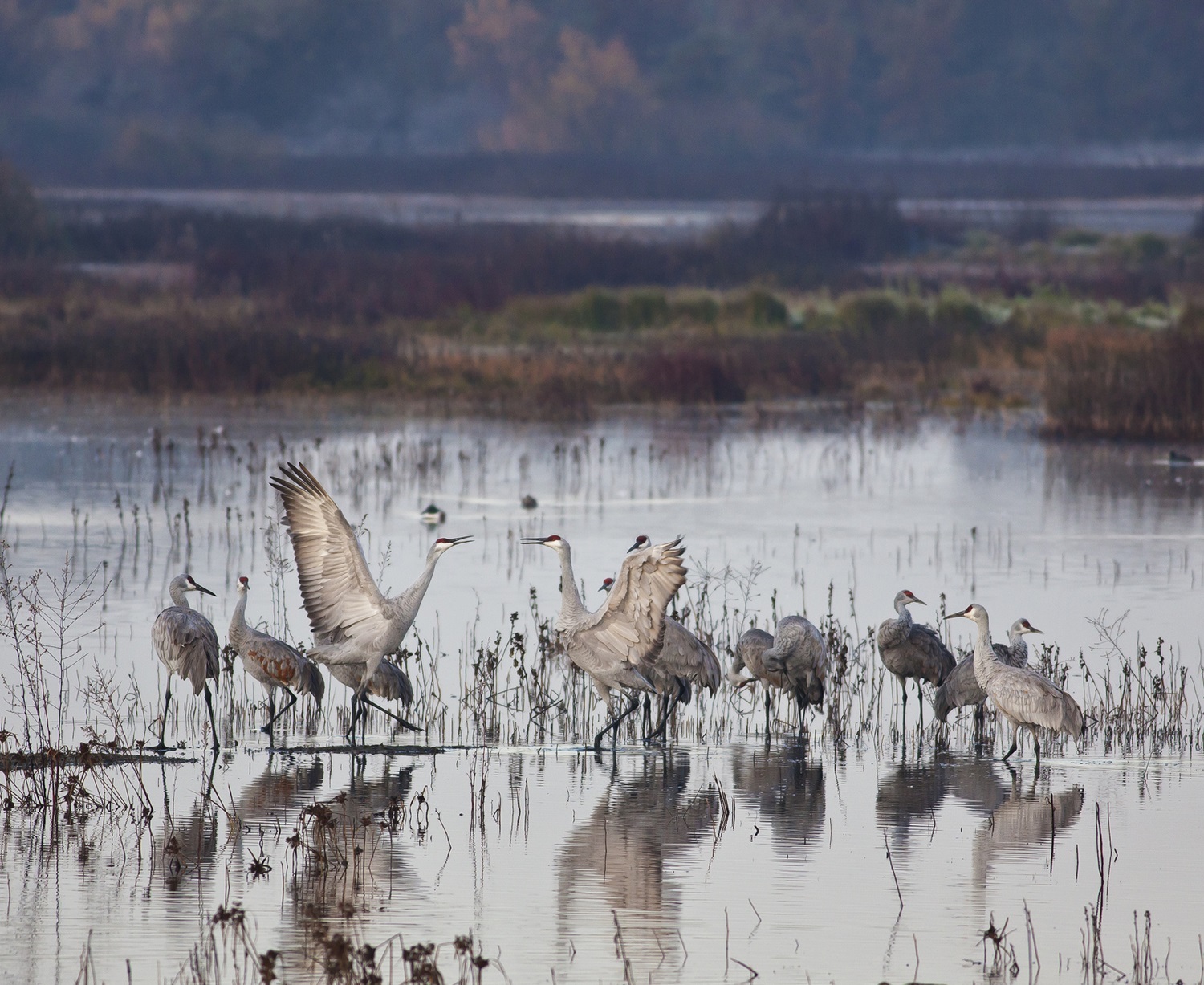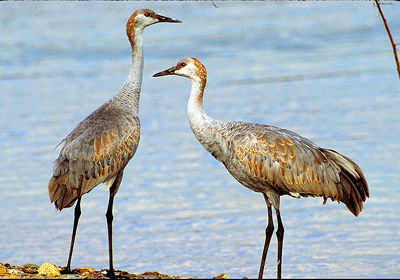Of the 15 species found worldwide, at least 5 have become rare, partly because of loss of nesting habitat. Cranes nest in marshes, bogs, sedge meadows and upland tundra. In Canada, 2 species occur: the sandhill crane (Grus canadensis ) is common, although one subspecies, the greater sandhill crane, is considered threatened in BC; the whooping crane (G. americana) is endangered. The sandhill crane nests as far north as Banks and Devon islands.
Nests are large mounds of dry plant material. Usually 2 brown or buff eggs with dark brown or purplish spots and blotches are laid, hatching after about 30 days. Parents share incubation. Cranes may live as long as 20 years.
During migration, sandhill cranes favour uplands and agricultural areas and may be seen in spectacular concentrations in south-central Saskatchewan, where they feed in grainfields. Large numbers winter in the southern US and Mexico. Limited hunting is allowed in portions of Saskatchewan and in several states of the US.


 Share on Facebook
Share on Facebook Share on X
Share on X Share by Email
Share by Email Share on Google Classroom
Share on Google Classroom







